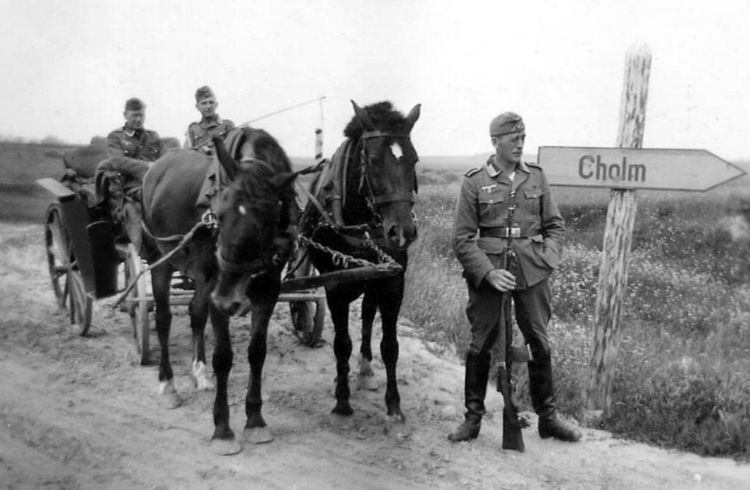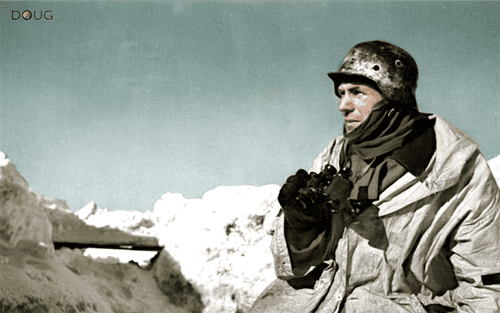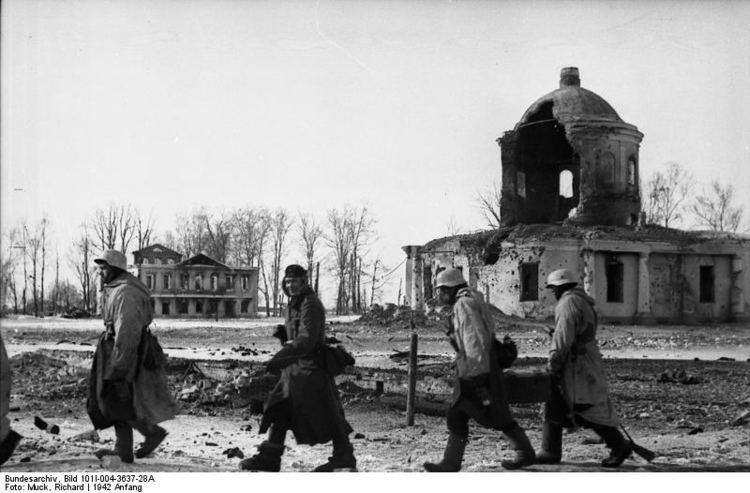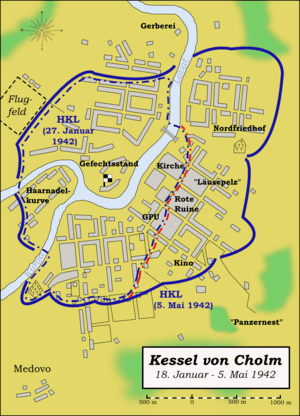1,500 dead2,000 wounded 20,000 | Dates 23 Jan 1942 – 5 May 1942 | |
 | ||
5,500 18 mortars10 anti tank guns 33rd rifle division 391st rifle division20 tanks Similar | ||
The Kholm Pocket (German: Kessel von Cholm; Russian: Холмский котёл) was the name given for the encirclement of German troops by the Red Army around Kholm south of Leningrad, during World War II on the Eastern Front, from 23 January 1942 until 5 May 1942. A much larger pocket was simultaneously surrounded in Demyansk, about 100 km (62 mi) to the northeast. These were the results of German retreat following their defeat during the Battle of Moscow.
Contents

The air supply of Kholm and Demyansk, while successful, lead to an overconfidence in the German high command in regard to the Luftwaffe's ability to air supply encircled forces which would lead to disastrous consequences at the Battle of Stalingrad in late 1942 and early 1943.

Overview

At the small Kholm pocket, 5,500 German soldiers held it for 105 days. The pocket was supplied by air, but was too small for planes to land; therefore, supplies had to be dropped in and recovered by the German defenders. Among the airdropped supplies were 35 of the first 50 prototype MKb 42(H) rifles.
The puzzled together German units trapped at Kholm were mainly part of:


German forces made three attempts to relieve the pocket, in January, March and May 1942. While the first two failed the third one was successful, with the German forces in the pocket reduced in number to 1,200 by then.
In July 1942, the Cholm Shield was awarded to the German defenders of the pocket, upon the suggestion of Generalmajor Theodor Scherer, similar to the Demyansk Shield.
Scherer was personally awarded the Knight's Cross of the Iron Cross with Oak Leaves by Adolf Hitler for the command of the defense of Kholm.
Kholm was eventually liberated by the Red Army on 21 February 1944.
War crimes
Members of the Reserve-Polizei-Bataillon 65, a police unit from Gelsenkirchen, were questioned after the war by the state prosecuter in Dortmund for their involvement in ethnic cleansing in Eastern Europe. The unit was found to have taken part in a minimum of 5,000 executions and a large number of deportations to concentration camps. Among them was also the hanging of a young girl in Kholm during the siege.
